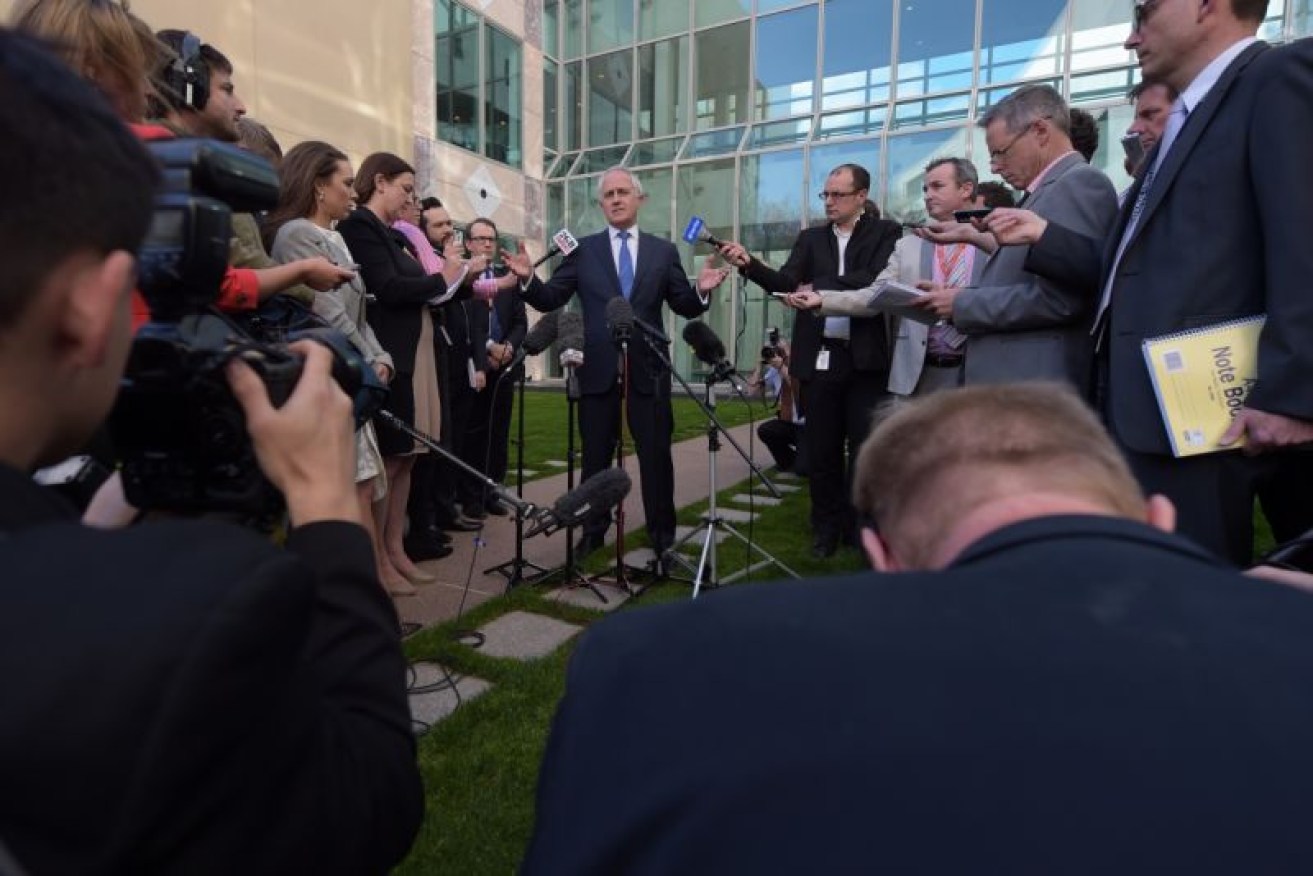Liberal leadership spill: inside the party room


AAP
The Liberal Party is set to head back to the ballot, after Malcolm Turnbull formally launched a challenge for the party’s lead on Monday.
Deputy leader Julie Bishop reportedly visited Mr Abbott before Question Time on Monday to inform him of the loss of her support, while Mr Turnbull spoke to him just before a 4pm news conference at Parliament House.
In a speech to media, he said Mr Abbott “has not been capable of providing the economic leadership our nation needs”.
• In profile: Malcolm Turnbull’s life in politics
• Malcolm Turnbull to challenge Tony Abbott
• Lib spill ‘like a freight train’
Mr Turnbull also resigned as Communications Minister, ahead of announcing the challenge.
A Liberal Party room vote will reportedly be held on Tuesday morning.
So how does a Liberal leadership spill work?

Lib spill number two is on as Mr Turnbull formally announces challenge. Photo: Getty
A leadership spill can be called by any Liberal member of the House of Representatives or the Senate.
Unlike Labor’s Caucus, the Liberal Party room operates on what party sources call “opaque procedures” and “unwritten conventions” under the chairmanship of the leader.
If the motion for the spill is seconded, a motion to elect a new leader will be put to the 102 Liberal Party MPs.
For the spill motion to be successful, it needs to get at least 52 votes – a majority plus one.

Tony Abbott (L) and Communications Minister Malcolm Turnbull during question time.
The 21 National Party members of the Coalition are not involved in the vote.
If the motion is passed, there will be a vote for leadership requiring members to nominate.
Candidates will stand and nominate themselves.
Whips will then conduct a call of the roll, to get the exact number of members in the party room. That number of ballot papers will be prepared and distributed for a secret ballot.
Each member will write the name of the candidate they vote for on the ballot and place in a box.
Whips count ballots, rank the candidates in order of votes received and advise the result to the party room.
Then what will happen?
There will be one of three outcomes:
Scenario 1: The motion for a spill fails to gather enough support and is defeated.
Scenario 2: The motion is successful but only Tony Abbott nominates, with no challengers putting their hand up.
Scenario 3: The motion succeeds, members nominate a candidate for leader and a vote on the leadership occurs.
If Mr Abbott recontests the leadership and no-one challenges him, he has consolidated his position, just as if the motion for a spill fails to gather enough support and is defeated.
However if someone does challenge Mr Abbott, then it will be a fractured party room that must choose between taking a chance on a new leader or sticking with the incumbent.
If the motion succeeds and members vote for an alternative to the existing PM in the leadership vote, Mr Abbott has been ousted as Liberal Party leader and Prime Minister. He would need to visit Government House to advise the Governor General that he no longer has the support of the party room.
The new leader would follow saying he or she does have support. The new leader would then be sworn in as Prime Minister.
More than two?
There is also the possibility of more than two candidates contesting the leadership.
This occurred in 2009 when Mr Abbott won the leadership against the incumbent Malcolm Turnbull, and Joe Hockey.
If this was to occur, a round of elections would be held, with the candidate that won the lowest number of votes eliminated until just two candidates remained.
From those two, the candidate who wins at least 52 votes would become leader.








